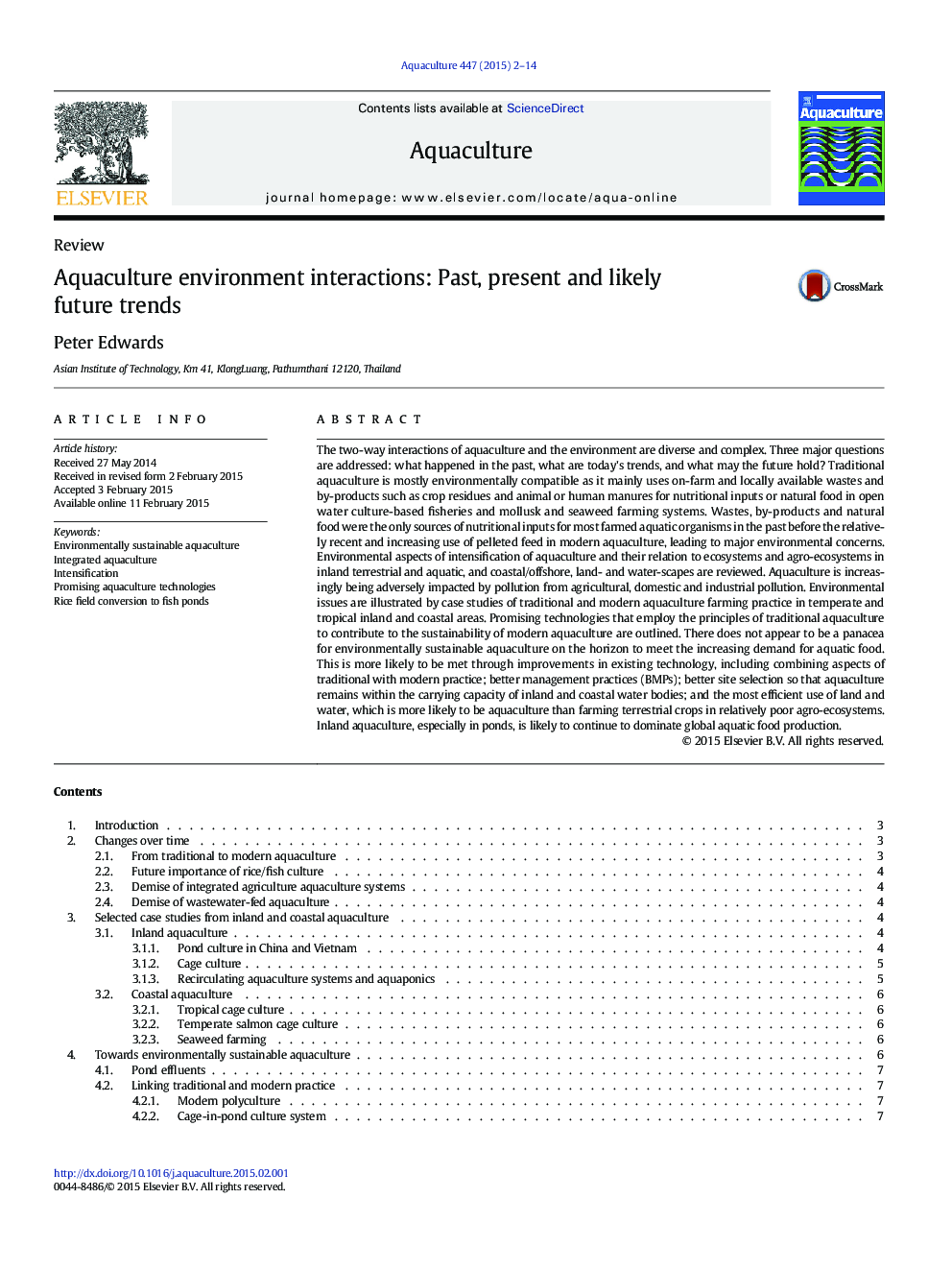| کد مقاله | کد نشریه | سال انتشار | مقاله انگلیسی | نسخه تمام متن |
|---|---|---|---|---|
| 2421586 | 1552840 | 2015 | 13 صفحه PDF | دانلود رایگان |
• decline of environmentally-friendly integrated agriculture-aquaculture systems
• promising environmentally-friendly technologies
• freshwater pond culture to continue global dominance
• call for conversion of low-yielding rice fields to fish ponds
The two-way interactions of aquaculture and the environment are diverse and complex. Three major questions are addressed: what happened in the past, what are today's trends, and what may the future hold? Traditional aquaculture is mostly environmentally compatible as it mainly uses on-farm and locally available wastes and by-products such as crop residues and animal or human manures for nutritional inputs or natural food in open water culture-based fisheries and mollusk and seaweed farming systems. Wastes, by-products and natural food were the only sources of nutritional inputs for most farmed aquatic organisms in the past before the relatively recent and increasing use of pelleted feed in modern aquaculture, leading to major environmental concerns. Environmental aspects of intensification of aquaculture and their relation to ecosystems and agro-ecosystems in inland terrestrial and aquatic, and coastal/offshore, land- and water-scapes are reviewed. Aquaculture is increasingly being adversely impacted by pollution from agricultural, domestic and industrial pollution. Environmental issues are illustrated by case studies of traditional and modern aquaculture farming practice in temperate and tropical inland and coastal areas. Promising technologies that employ the principles of traditional aquaculture to contribute to the sustainability of modern aquaculture are outlined. There does not appear to be a panacea for environmentally sustainable aquaculture on the horizon to meet the increasing demand for aquatic food. This is more likely to be met through improvements in existing technology, including combining aspects of traditional with modern practice; better management practices (BMPs); better site selection so that aquaculture remains within the carrying capacity of inland and coastal water bodies; and the most efficient use of land and water, which is more likely to be aquaculture than farming terrestrial crops in relatively poor agro-ecosystems. Inland aquaculture, especially in ponds, is likely to continue to dominate global aquatic food production.
Journal: Aquaculture - Volume 447, 1 October 2015, Pages 2–14
